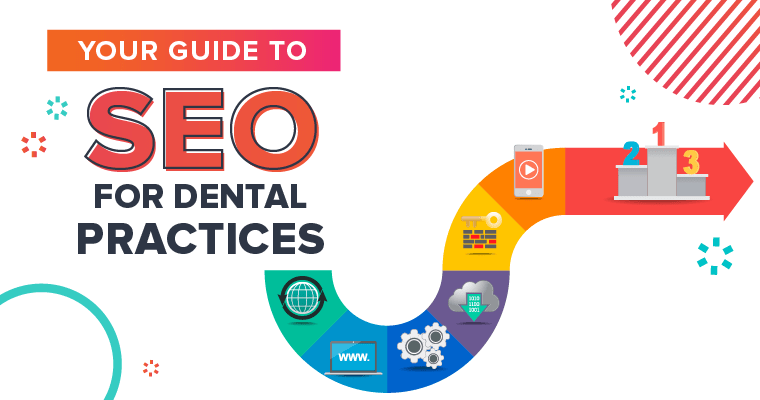Understanding the Basics of Dental Marketing
Defining Dental Marketing
Dental marketing is all about connecting dental practices with potential patients. Think of it as the bridge between what your practice offers and the people who need your services. It’s not just about flashy ads or catchy slogans. It’s about building a relationship with your community and letting them know why you’re the right choice for their dental needs. From social media to local events, every interaction is a chance to market your practice.
Importance of Dental Marketing for Practice Growth
Why bother with dental marketing? Simple. It’s the lifeline for any practice looking to grow. Without it, even the best dental services can go unnoticed. Marketing for dentists helps attract new patients, retain current ones, and build a solid reputation in the community. A well-thought-out marketing strategy can mean the difference between a thriving practice and one that’s just getting by.
Common Misconceptions About Dental Marketing
Many folks think dental marketing is just about getting the word out. But there’s more to it. Here are some common misconceptions:
- It’s only about advertising: Nope, it’s also about patient experience and community engagement.
- One-size-fits-all: What works for one dental practice might not work for another. Customization is key.
- It’s too expensive: Sure, some tactics can be pricey, but there are plenty of cost-effective ways to market your practice.
Dental marketing isn’t just a task to check off your list. It’s an ongoing process that requires attention and adaptation. A good dental marketing company can guide you through this journey, helping you find what works best for your practice.
Effective SEO Strategies for Dental Practices
On-Page SEO Techniques
On-page SEO is all about making sure your website is friendly to both users and search engines. Your website’s content should be relevant and easy to navigate. Here are some steps to ensure your on-page SEO is on point:
- Keyword Optimization: Identify keywords that potential patients might use to find dental services. Use these naturally in your content, titles, and meta descriptions.
- Quality Content: Create informative and engaging content that answers common questions about dental procedures.
- Technical SEO: Ensure your site loads quickly, is mobile-friendly, and has a clear site structure.
Off-Page SEO and Link Building
Off-page SEO focuses on building your website’s reputation. This involves getting other reputable sites to link back to yours, which can boost your site’s authority:
- Link Building: Reach out to dental directories, local businesses, and suppliers for backlinks.
- Social Media Engagement: Share your content on social media to increase visibility and attract more links.
- Guest Blogging: Write articles for other sites in exchange for a link back to your website.
Local SEO for Dentists
Local SEO is crucial for dentists because it helps attract patients from your area. When someone searches for a dentist nearby, you want your practice to appear at the top:
- Google My Business: Claim and optimize your listing with up-to-date information.
- Local Keywords: Use keywords that include your city or neighborhood.
- Patient Reviews: Encourage happy patients to leave positive reviews online, as they can significantly impact your local search rankings.
Investing in dental SEO services is not just about boosting your online presence—it’s about connecting with your local community and growing your practice. By focusing on these strategies, you can ensure that your dental practice stands out in search results and attracts more patients.
Leveraging Social Media for Dental Marketing
Choosing the Right Platforms
When it comes to social media, not all platforms are created equal. The key is to focus on where your current and potential patients spend their time. For many dental practices, this means prioritizing platforms like Instagram, Facebook, and TikTok. Instagram, with its visual appeal, is great for showcasing before-and-after photos of dental work. Facebook offers a more comprehensive platform for engaging with a community through posts, comments, and even live videos. TikTok, though newer, is rapidly growing and can be used to share quick, engaging content that captures attention.
Creating Engaging Content
Content is king, but engagement is queen. To truly succeed in social media marketing, your content must be engaging. This means crafting posts that encourage likes, shares, and comments. You might share patient testimonials, educational videos about dental hygiene, or fun behind-the-scenes looks at your dental practice. Consider using a mix of content types, such as photos, videos, and infographics, to keep your audience interested.
- Share educational tips about dental care.
- Post testimonials and success stories.
- Use polls and questions to engage with your audience.
Measuring Social Media Success
Success on social media isn’t just about the number of followers. It’s about engagement and the quality of interactions. To measure success, look at metrics like engagement rates, reach, and conversion rates. Tools like Facebook Insights or Instagram Analytics can provide detailed data about how your content is performing. Regularly reviewing these metrics can help you adjust your strategies to better meet the needs of your audience.
Social media is not just a broadcasting tool; it’s a way to build relationships. By focusing on engagement, you can turn followers into loyal patients.
Content Marketing for Dental Practices
Content marketing is a big deal when it comes to dental practice marketing. It’s all about sharing helpful info that not only attracts new patients but keeps the current ones coming back. Let’s dive into how you can make content marketing work for your dental practice.
Developing a Content Strategy
First things first, you need a plan. A solid content strategy is your roadmap for creating and sharing content that resonates with your audience. Start by identifying what your patients want to know. Are they curious about teeth whitening, or maybe they need tips on better oral hygiene? Once you know what they’re interested in, you can tailor your content to meet those needs.
- Know Your Audience: Understand who your patients are and what they care about.
- Set Goals: Decide what you want your content to achieve. Is it to educate, engage, or convert?
- Plan Your Content: Create a schedule for regular content updates, whether it’s weekly blog posts or monthly newsletters.
Types of Content to Create
There are tons of different types of content you can create to boost your dental practice marketing. Here are a few ideas:
- Blogs: Write articles about common dental issues, procedures, and tips.
- Videos: Create short videos explaining procedures or showcasing patient testimonials.
- Infographics: Use visuals to break down complex information into easy-to-understand graphics.
Content marketing isn’t just about pushing out information; it’s about building trust and relationships with your patients through valuable content.
Promoting Your Content Effectively
Creating content is just half the battle. You’ve got to get it in front of people. Here’s how:
- Social Media Sharing: Post your content on platforms like Facebook and Instagram where your patients hang out.
- Email Newsletters: Send out regular updates to your patient list with links to your latest content.
- Collaborate: Partner with other local businesses or dental professionals to expand your reach.
By focusing on these strategies, you position your dental practice as a trusted source of information, which can ultimately lead to practice growth. Keep your content patient-focused and engaging, and you’ll see the benefits in no time.
Utilizing Pay-Per-Click Advertising in Dental Marketing
Understanding PPC Basics
Pay-per-click (PPC) advertising is a digital marketing strategy where advertisers pay a fee each time their ad is clicked. It’s like buying visits to your site rather than earning them organically. For dental practices, PPC can be a game-changer, allowing you to appear at the top of search results instantly. This visibility is crucial in a competitive market where patients often choose providers based on who shows up first in their search.
Setting Up a Successful PPC Campaign
- Keyword Research: Start by identifying keywords that potential patients might use when searching for dental services. Use tools like Google Keyword Planner to find relevant terms.
- Ad Creation: Write compelling ad copy that highlights what makes your practice unique. Include a strong call-to-action to encourage clicks.
- Landing Pages: Ensure that the landing page your ad directs to is relevant and provides a seamless user experience.
- Budgeting: Set a realistic budget that aligns with your marketing goals. PPC platforms allow you to control your spending effectively.
Measuring PPC Performance
To ensure your PPC campaigns are effective, keep an eye on the following metrics:
- Click-Through Rate (CTR): This measures how often people click on your ad after seeing it. A high CTR indicates that your ad is appealing.
- Conversion Rate: Track how many of those clicks lead to appointments or inquiries. This tells you if your ad is attracting the right audience.
- Cost Per Click (CPC): Monitor how much you’re paying on average for each click. This helps in assessing the efficiency of your budget.
PPC advertising, when done right, can drive targeted traffic to your dental practice’s website, turning clicks into loyal patients. It’s all about reaching the right people at the right time with the right message.
Building and Managing Your Online Reputation
Importance of Online Reviews
Online reviews are like word-of-mouth in the digital age. They can make or break your dental practice. A single positive review can attract new patients, while a negative one might scare them away. Potential patients often read reviews before making a decision, so having a solid collection of good reviews is critical. Encourage your satisfied patients to leave reviews on platforms like Google, Yelp, or Healthgrades. This helps build trust and credibility.
Responding to Patient Feedback
When it comes to feedback, both positive and negative, your response matters. Here’s a simple guide:
- Thank the reviewer – Always start with gratitude.
- Acknowledge their experience – Show empathy and understanding.
- Address any issues – Offer solutions or invite them to discuss privately.
Responding promptly and professionally shows that you care about your patients’ experiences and are committed to improving.
Strategies for Reputation Management
Managing your online reputation involves more than just gathering reviews. Here are some strategies:
- Monitor your online presence regularly – Use tools like Google Alerts to track mentions of your practice.
- Engage on social media – Actively participate in discussions and respond to comments.
- Encourage positive reviews – After a successful treatment, kindly ask your patients to share their experiences online.
A good reputation is built over time but can be damaged quickly if not managed properly. Stay proactive in maintaining your online image to ensure continued growth and patient trust.
Analyzing and Improving Your Dental Marketing Efforts
Tracking Key Performance Indicators
Understanding which metrics matter can be a game-changer for your dental practice’s marketing. Key Performance Indicators (KPIs) are the lifeline of any marketing strategy. Focus on metrics like patient acquisition cost, return on investment (ROI), and conversion rates. These numbers tell you if your marketing dollars are working hard or hardly working. Create a simple table to track these KPIs monthly:
| KPI | January | February | March |
| Patient Acquisition Cost | $300 | $320 | $310 |
| ROI | 150% | 140% | 155% |
| Conversion Rate | 2.5% | 2.7% | 2.6% |
Using Analytics Tools
Analytics tools are like your marketing GPS—they show you where you are and where you need to go. Google Analytics, for instance, can help you understand visitor behavior on your website. Are they finding what they need? Are they booking appointments? Dive into data on page views, bounce rates, and session duration. This info can guide adjustments to your website and marketing campaigns.
Adjusting Strategies for Better Results
Once you’ve gathered data, it’s time to tweak and refine. Maybe your social media posts aren’t getting the engagement you hoped for, or your email campaigns aren’t converting. Don’t be afraid to experiment. Try A/B testing with different headlines, images, or calls to action. Sometimes small changes can lead to big improvements.
Consistent analysis and adjustment are keys to a successful marketing plan. It’s like gardening—regular care and attention yield the best growth.
Wrapping It Up
So, there you have it, folks. Navigating the world of dental marketing and SEO might seem like a maze at first, but with the right strategies, it can really pay off. Whether you’re just starting out or looking to boost your existing practice, focusing on local SEO, engaging content, and a solid online presence can make all the difference. Remember, it’s not just about getting more patients—it’s about connecting with them in meaningful ways. Keep experimenting, stay updated with trends, and don’t be afraid to seek professional help if needed. Your practice’s growth is just a few clicks away!
Frequently Asked Questions
What is dental marketing?
Dental marketing is all about getting the word out about your dental practice to attract new patients. It involves using different strategies like social media, SEO, and ads to reach people who might need dental services.
Why is SEO important for dentists?
SEO helps your dental practice show up in online search results when people look for dentists. By optimizing your website for search engines, you can attract more local patients and grow your practice.
How can social media help my dental practice?
Social media allows you to connect with your patients and share helpful information. By posting regularly, you can engage with your community, build trust, and attract new patients to your practice.
What is Pay-Per-Click advertising?
Pay-Per-Click (PPC) advertising is a way to promote your dental practice online. You pay each time someone clicks on your ad. It’s a quick way to get more visibility and attract potential patients.
How do I manage my online reputation as a dentist?
Managing your online reputation involves monitoring reviews and feedback from patients. Responding to reviews, both positive and negative, shows that you care about patient experiences and can help build trust.
What are some key performance indicators in dental marketing?
Key performance indicators (KPIs) in dental marketing include the number of new patient appointments, website traffic, and engagement on social media. Tracking these helps you understand the effectiveness of your marketing efforts.






